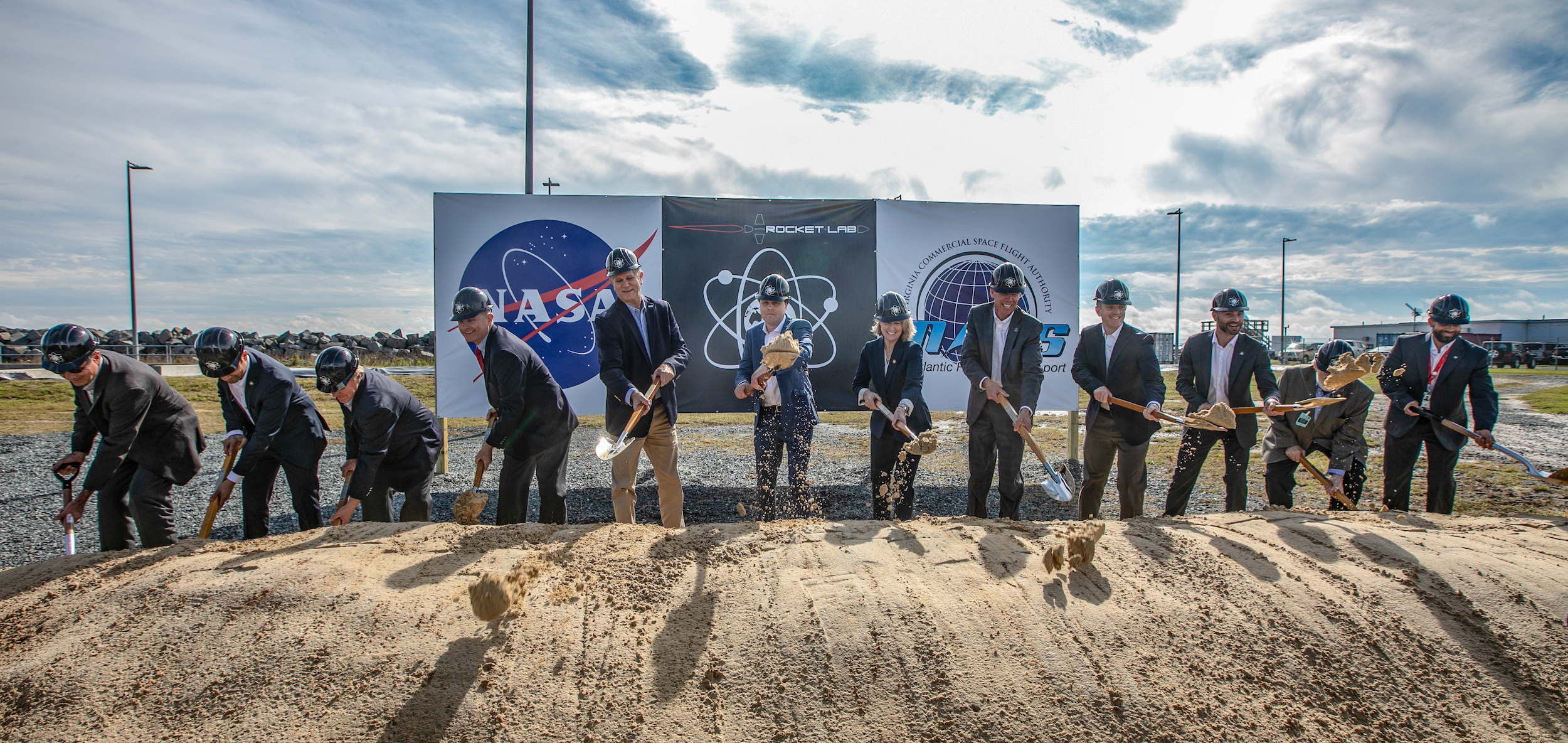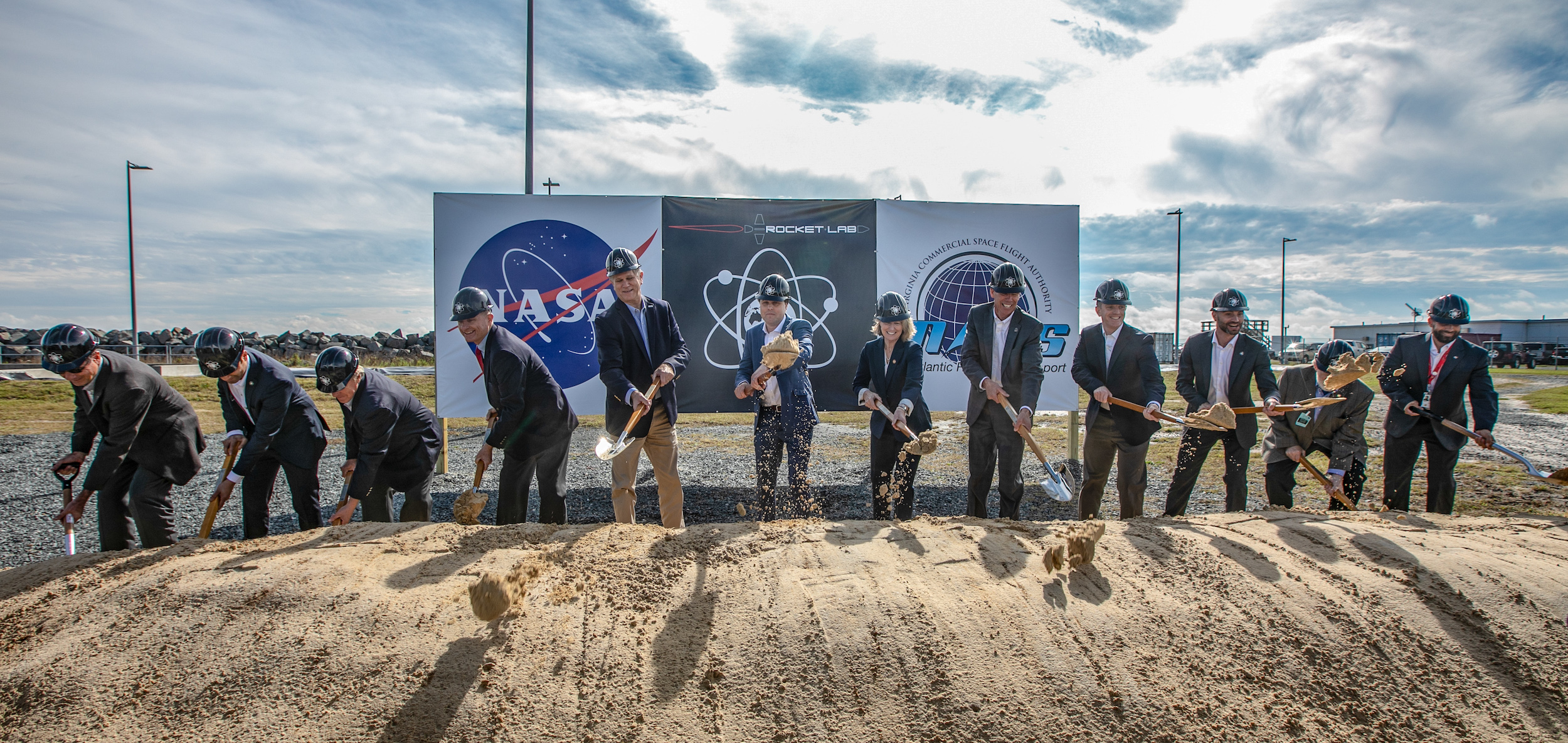Launch provider Rocket Lab has opened the doors on LC-2, its first launch facility in the U.S., adding capacity and versatility for providing trips to orbit. And LC-2 already has its first customer: the U.S. Air Force’s Space Test Program.
The company had a little shindig today at the facility, located on Wallops Island in Virginia — home to NASA’s Wallops Flight Facility as well. There they took the wrapper off LC-2, which has been under construction since it was announced last October.

The team breaks ground back in 2018.
It’s not some wild new concept, just a typical launchpad and support facilities where the rockets live, get checked, fueled, and so on. The most important difference with this one, for Rocket Lab, is that it’s here in the U.S.; So far, all its 10 commercial launches have been from Launch Complex 1 in New Zealand, where the company is based.
The new facility will be put to use soon: the Air Force is first in line to put a payload into orbit in a launch currently planned for Q2 of 2020. All we know about the mission, STP-27RM, is that it will “test new capabilities that we will need in the future.”
“It’s an honor and privilege to be launching a U.S. Air Force’s Space Test Program payload as the inaugural mission from Launch Complex 2,” said Rocket Lab founder and CEO Peter Beck in a press release. “We’ve already successfully delivered STP payloads on Electron from Launch Complex 1, and we’re proud to be providing that same rapid, responsive, and tailored access to orbit from U.S. soil.”
Right now LC-2 is “only” equipped to handle up to 12 launches a year, while LC-1 can theoretically do 120. Rocket Lab is nowhere near hitting those rates just yet, but they’re well on their way with a perfect track record and a demonstration of its ability to quickly adjust timeframes. The goal is eventually to be launching weekly, or even more frequently than that. And the more launch sites they have to pull that off, the better.













